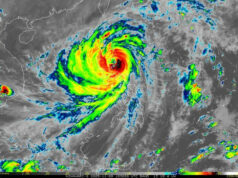Oct. inflation slowest in 3-1/2 years
By Luz Wendy T. Noble
THE OVERALL rise in prices of widely used goods eased for the fifth straight month to its slowest pace in nearly three-and-a-half years in October, the Philippine Statistics Authority (PSA) reported on Tuesday, citing year-on-year drops for the heavily weighted food and non-alcoholic beverages, transportation and utilities.
At the same time, some regions saw an uptick in food prices as people sought pork substitutes amid the African Swine Fever (ASF) onslaught.
October saw headline inflation slow further to 0.8% from September’s 0.9% — thus marking the second straight month of below-one percent inflation — and the 6.7% a year ago that was sustained from September and was a nine-year peak.
October’s reading was the slowest since April 2016’s 0.7%.
“The downtrend in inflation in October 2019 was primarily due to the annual drop in the index of the heavily weighted food and non-alcoholic beverages,” PSA Undersecretary Dennis S. Mapa said in a briefing in Quezon City.
He added that the decline in the indices for transport, housing, water, electricity, gas and other fuels also pulled inflation further down.
Last month’s pace also landed in the lower half of the Bangko Sentral ng Pilipinas’ (BSP) 0.5-1.3% estimate for the month and matched the median in BusinessWorld’s poll of 14 economists.
The most recent data brought year-to-date inflation to 2.6%, well within the central bank’s 2-4% target range for the whole of 2019 though still higher than an official 2.5% forecast full-year average.
Stripping out volatile prices of food and energy yielded a 2.6% core inflation in October that eased from September’s 2.7% and the year-ago 4.9%. Year-to-date core inflation clocked in at 3.3%.
Headline inflation in Metro Manila, however, was higher than the national rate at 1.3%, picking up from September’s 0.9% though slower than October 2018’s 6.1%. Other regions where inflation topped the national average were Cordillera Administrative Region (1.2%), Central Luzon (2.3%), Cavite-Laguna-Batangas-Rizal-Quezon (1.4%), Occidental and Oriental Mindoro-Marinduque-Romblon-Palawan (1.1%), Western Visayas (1.1%) and the Autonomous Region in Muslim Mindanao (one percent).
“The latest inflation outturn remains consistent with the BSP’s prevailing assessment of a benign inflation outlook, with average inflation still expected to firmly settle within the government’s target range…” BSP said in a statement Tuesday.
Mr. Mapa noted that prices of pork substitutes have risen amid the ASF outbreak. “Generally, ‘yung prices ng chicken ay tumataas, ‘yung beef din and ‘yung pork pababa. Inflation on egg, milk and cheese… pataas na siya nung nakaraang apat na buwan (Generally, prices of chicken and beef rose, while price of pork went down. Inflation on egg, milk and cheese has been picking up in the past four months),” he said.
According to National Economic and Development Authority Officer-in-Charge and Undersecretary for Regional Development Adoracion M. Navarro, the government is monitoring the outbreak’s price impact. “The livestock industry in the said ASF-stricken areas, which accounts for 21.7% of the country’s total hog production last year, remains at high risk. The government and private companies must collaborate to manage, contain and control the spread of the disease,” Ms. Navarro said in a statement on Tuesday.
Analysts think that inflation has already bottomed out as base effects may have worn off. “Base effects played a major role in forcing the heading print below one percent for a second straight month in 2019 with heavyweights food and transport posting deflation… But with the base effects from the peak of 2018 fading quickly, we expect inflation to revert to target as early as December,” ING-NV Manila Senior Economist Nicholas Antonio T. Mapa said in a note to reporters.
Security Bank Corp. Chief Economist Robert Dan J. Roces said in a separate e-mail to reporters: “We expect inflation to have bottomed out in October and start to pick up this November on dissipating base effects and higher consumer spending for the holidays.”
Receding inflation since last year’s multi-year peaks has enabled the central bank to partially dial back 2018’s 175 cumulative basis point increase in benchmark interest rates by a total of 75 bps in three moves to 3.5% for overnight deposit, four percent for the reverse repurchase facility and 4.5% for overnight lending.
The BSP has also cut banks’ reserve requirement ratio four times this year by a total of 400 basis points (bps) to 14% for universal and commercial lenders and four percent for thrift banks starting December. In the latest RRR easing last month, the reserve ratio of rural banks that will go down to three percent in November was left untouched.
Governor Benjamin E. Diokno told Bloomberg and ABS-CBN News Channel on Monday that monetary authorities are done with policy easing for the year.
“We think the BSP’s signaled pause on monetary easing for the year is prudent; and with just 75bps slashed from 2018’s 175bps rate hike leaves the central bank ample policy leeway to manage any inflationary spikes in 2020, if at all,” ING’s Mr. Mapa said.




